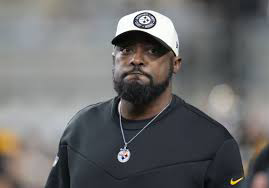
The head coach was asked about the ways he balances the challenges of unpredictable weather, schedule adjustments in training, and giving veteran players rest. The reporter acknowledged that the coach had already explained how such adaptations prepare a team for the rhythm and demands of a long regular season, and that resting experienced players often has less to do with protecting them physically and more to do with creating practice opportunities for younger or less experienced teammates. But the question this time had a different focus: what, in his mind, was actually fun about holding a training camp away from the team’s usual facilities — a so-called “destination” camp?

The coach smiled at the thought and explained that for him, the joy lies in working toward something intangible but immensely valuable — something you can’t measure with statistics or metrics but that has a profound influence on winning: camaraderie. He spoke about the unique connection that forms within a group when members understand each other, share moments together, and learn to function as a unified whole. These bonds, he said, are fundamental to building a team capable of greatness.
Destination camps, in his view, offer a rare setting for that process. While the formal football work — meetings, drills, and structured practices — is essentially the same no matter where you are, the informal moments at a remote camp make all the difference. In the evenings, players might gather at picnic tables, relax in each other’s rooms, and simply spend unstructured time together. These conversations and shared experiences away from the formal fieldwork help players see each other as people, not just as positions on a depth chart.
When training is held locally, by contrast, the formal sessions end and everyone gets into their own cars, drives home, and resumes their individual lives. The coach believes that there’s a competitive edge to being somewhere together, where players not only work side-by-side but also live and eat together for days or weeks at a time. It accelerates the development of trust, cohesion, and a shared sense of purpose — qualities that can’t be quantified but that become glaringly obvious when a team is “good in that space,” as he put it. In his mind, those bonds often help a team survive and overcome difficult stretches during a season.
The conversation turned to the roster, which this year includes many new players — and not just depth additions, but athletes expected to play crucial roles. The question was whether it’s necessary for players to actually like each other in order for a team to succeed. The coach’s answer was nuanced: liking one another isn’t strictly required. He’s had successful teams where certain teammates didn’t especially enjoy each other’s company. But there is something else that is absolutely necessary: understanding and respect.
Understanding, he explained, means taking the time to see the game and life through another person’s perspective. It involves recognizing their motivations, values, and approach to challenges. Respect, in his definition, has little to do with raw talent and everything to do with appreciating a person’s daily commitment to improvement — both for themselves and for the team. These qualities take time to develop, and a destination camp provides the perfect setting for that process to unfold.
This is especially critical when many of the newcomers are poised to take on leadership roles. Leaders, the coach said, must understand him, understand the culture he’s building, and fully grasp the values that define the team. His role includes training them not just to execute plays but also to “trumpet those values” to the rest of the roster. Leadership alignment — knowing the culture and reinforcing it consistently — is part of why he invests so much in getting to know these players early.
The interviewer asked whether such understanding and respect are best cultivated during practice or in off-field settings. The coach was clear: it’s both. The structured, formal work on the field, in meeting rooms, and in the weight room is essential. But informal time away from the field also plays a crucial role in strengthening those relationships.
The discussion shifted toward the quarterback position, where the team has seen significant turnover. From the time the coach was hired in 2007 through the end of the 2021 season, the top of the QB depth chart remained remarkably stable. But over the past four seasons, that stability has been replaced by constant change — and this summer marks the second straight year in which every quarterback in camp is new to the team.
How does he manage that kind of upheaval? By staying adaptable. The coach described it as a “welcome challenge,” acknowledging that both the head coach and the quarterback occupy roles under constant scrutiny. He sees it as vital to spend dedicated time with the quarterbacks, to understand each other, and to align on goals and expectations. This commitment has forced him to alter his daily routine in recent years to carve out that time, but he embraces it as part of his job. His philosophy is simple: be whatever the team — and each specific part of the team — needs him to be. With a completely new QB room, his time and attention are essential, and he’s willing to give both.
Next, the reporter brought up something the coach had said in his camp-opening news conference: that the NFL has become a “coverage league.” Asked to explain, the coach pointed to the modern passing game’s growing dominance and complexity. Critical moments in games are often reduced to one-dimensional passing situations, which makes the ability to cover receivers — and to sustain that coverage for extended plays — a decisive skill. The increasing number of mobile quarterbacks, along with offensive schemes designed to exploit their mobility, puts even more pressure on defensive coverage. In today’s game, both personnel and strategic approaches make coverage proficiency essential.
So, what’s the formula for building a defense that can thrive in such an environment? For the coach, it starts with disrupting the offense’s normal rhythm and flow. That disruption can come in different forms: in zone coverage, it might mean re-routing eligible receivers; in man-to-man situations, it could be playing press coverage to delay routes. The goal is to upset the precise timing that most passing concepts rely on. Because quarterbacks progress through reads in a set order, even a tenth of a second’s delay can change what’s open and what isn’t. The coach stressed that disrupting timing can come from forcing the quarterback off his spot, altering route releases, or anything else that interrupts rhythm.
The conversation briefly touched on training camp injuries, with the coach noting that “bumps and bruises” are inevitable. The key is preventing minor issues from becoming major ones. That sometimes means strategically holding players out of practice — not because they couldn’t participate if it were the regular season, but to avoid aggravating a small injury into something worse. This decision-making process is collaborative: while medical experts have the primary say, the coach has accumulated nearly two decades of experience sitting in bi-weekly medical meetings. He joked about having earned a “layman’s medical degree” from hearing so many discussions about injury grades and treatment strategies. Over time, he’s learned to recognize patterns and to balance competitive needs with long-term player health.
When asked about what he focuses on during practices, the coach revealed a clear preference: when the team is in full pads, he gravitates toward the “big man” drills — the physical battles involving linemen and tight ends. In his view, football will always be, at its core, a physical game defined by those larger athletes. By being present at their drills, he sends a consistent message about the importance of physicality. On days without pads, when physicality is less central, he spends more time watching skill positions like wide receivers and defensive backs to give attention to the technical side of the game.
As the preseason opener approached, the coach was asked whether he wanted to see different things from the offense and defense. His answer was straightforward: he wanted everyone, regardless of unit, to execute routine plays consistently. That meant making tackles they’re supposed to make, catching balls they should catch, and avoiding unforced errors like pre-snap penalties. He also expected crisp execution of situational football — moving in and out of personnel packages smoothly, being aware of down-and-distance, and handling red zone situations intelligently. One element he highlighted was the challenge of transitioning between units in a game setting — something that can’t be fully simulated in practice. How players manage those transitions, especially when juggling multiple responsibilities, would be a key area of evaluation.
Finally, the topic turned to whether he would ever consider sitting his starting quarterback for the entire preseason, as some NFL coaches have done. The coach hinted strongly that this could happen as soon as 2025. For a veteran with two decades of experience, the number of snaps needed to be game-ready is far different from that of a younger player. If adapting to a player’s individual preparation needs meant keeping them out of preseason games entirely, he was open to making that call. In his mind, flexibility and adaptability are essential traits for a head coach.
Leave a Reply